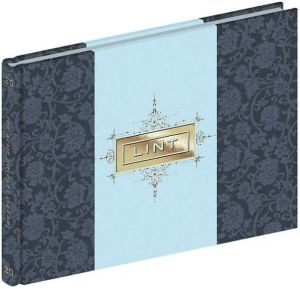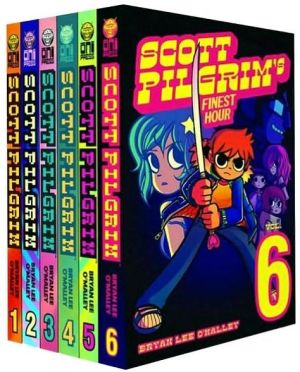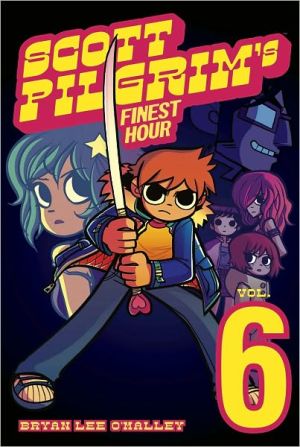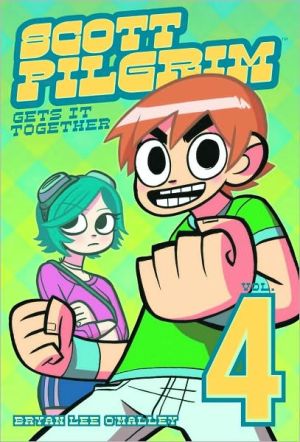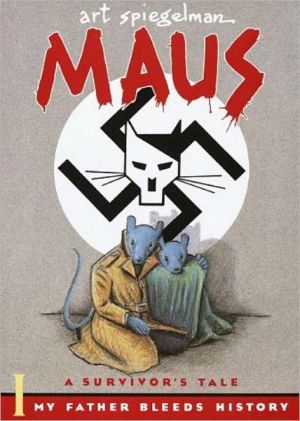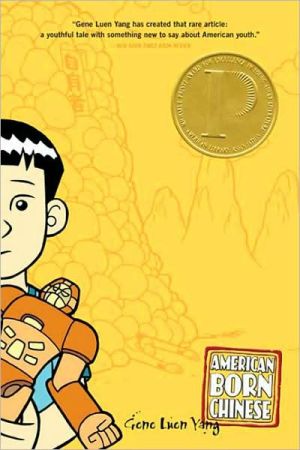Acme Novelty Library #20: Lint
Jordan Wellington Lint, fifty-one, is chief executive officer of Lint Financial Products, a company he began serving in 1985 as assistant and adviser before working his way up its corporate ladder to record-setting innovation in the fields of finance and high-yield investment. In his seven years as the head of Lint, Jordan has grown the company from a business lender and real estate speculator to a leading provider of network financial infrastructure services, all the while positioning Lint...
Search in google:
Jordan Wellington Lint, fifty-one, is chief executive officer of Lint Financial Products, a company he began serving in 1985 as assistant and adviser before working his way up its corporate ladder to record-setting innovation in the fields of finance and high-yield investment. In his seven years as the head of Lint, Jordan has grown the company from a business lender and real estate speculator to a leading provider of network financial infrastructure services, all the while positioning Lint as a model of corporate integrity and high-yield, low-risk product. Lint’s vision has made him one of the most influential and widely sought-after leaders in the complex Omaha securities industry, and his fresh approach to an understanding of local problems, leadership, and determination have enabled Lint to outdistance and outpace its competitors.Lint graduated from UNL in 1981 with a B.A. in business and briefly studied music and recording in Los Angeles before returning to his hometown of Omaha, Nebraska, where he has continued his life journey ever since. In his ongoing role as chief executive officer and his dual roles as public servant and father, Lint continues to put his creative leadership and vision to work in a variety of challenging settings. He is married and the father of two boys. The ACME Novelty Library #20 comprises a contributing chapter to cartoonist ChrisWare’s gradual accretion of the ongoing graphic novel experiment "Rusty Brown".The Barnes & Noble ReviewWare, a master formalist, has actually worked up a new set of storytelling tools for this particular volume. Lint's world is dominated by language, and oversized words (that stick out in his experience) are graphic elements on almost every page. So are arrays of tiny dots, another kind of lint. At the beginning of the book, a set of Ben-Day dots form the face of baby Jordan as his consciousness coalesces and he speaks his first "mama." And at the end, as elderly Jordan is dying, his world disintegrates into dots again, as he thinks "am I... am... am..." Which, of course, bleeds through the back cover to appear, in almost imperceptible white type, as "ma... ma...."
\ Publishers WeeklyIn previous books Ware has diagrammed intergenerational relationships and dissected the events of a single day. This stunningly realized issue of Ware's Acme Novelty Library—both the latest chapter of his in-progress Rusty Brown graphic novel, and a self-contained narrative—chronicles the entire life of Jordan Wellington Lint, who ages one year for nearly each of this book's 72 pages. Ware's project is not to objectively chart the course of a life, but to investigate the development of subjective consciousness. Lint, a secondary character in earlier chapters of Rusty Brown, takes center stage, from his origins as a blastocyte until the moment of his death. Just as cells conglomerate to form an organism, Lint's early perceptions cluster to form associations that echo throughout. Similarly, Lint has constructed a self-narrative that allows him to remain the hero of his own story until he is periodically undermined by the invasions of reality. In the book's extraordinary climax, Lint himself is confronted by the subjective experiences of another who regards Lint as the monster in a different story. As the book's final moment clarifies, our struggle for self-definition is the converse of our need to connect with others. (Nov.)\ \ \ The Barnes & Noble ReviewExcerpted from an essay, by Douglas Wolk, entitled "Comics Raw and Cooked" on The Barnes & Noble Review.\ Way over on the other side of the stylistic scale is Chris Ware, whose artwork is cooked to the point of falling off the bone: perfectly geometrical shapes, micro-calibrated line weight, flawlessly composed images that strip everything down to iconic simplicity. The Acme Novelty Library 20 is the official title of his new book (the creator is identified only as "F. C. Ware" in the book itself), and it's the twentieth in a series that he's been publishing since 1993 (first as individual stapled comics, more recently as hardcover books). The only word that appears on its front cover, though, is "LINT": this is the life story of one Jordan "Jason" Wellington Lint, from birth to death. It's apparently a chapter of Ware's work-in-progress "Rusty Brown," but it's also a standalone volume, formally complete in itself.\ Jordan Lint, like most of Ware's protagonists, is a genuinely pathetic person, although of a different ilk than the nebbishy Jimmy Corrigan or geeky Rusty Brown. Lint's world is one of privilege and instant gratification: he obeys every impulse he has, no matter who it hurts. That, of course, means that he's a moral failure every step of the way. Acme 20 runs through the crucial moments of his life as he experiences their importance -- and they're not necessarily the moments that are most important to other people, as we find when off-panel events surge up from his past.\ Ware, a master formalist, has actually worked up a new set of storytelling tools for this particular volume. Lint's world is dominated by language, and oversized words (that stick out in his experience) are graphic elements on almost every page. So are arrays of tiny dots, another kind of lint. At the beginning of the book, a set of Ben-Day dots form the face of baby Jordan as his consciousness coalesces and he speaks his first "mama." And at the end, as elderly Jordan is dying, his world disintegrates into dots again, as he thinks "am I... am... am..." Which, of course, bleeds through the back cover to appear, in almost imperceptible white type, as "ma... ma...."\ All this precision pays off emotionally. There's a phenomenal page where we see that teenage Lint has gotten into a car accident -- which we later understand has killed his friend in the passenger seat -- while getting high behind the wheel. Every single graphic element on the page is significant: the huge red stop sign has been foreshadowed on the previous page (and echoes a series of little red bursts throughout the book); the spatter of dots representing the moment of impact recapitulate Jordan's birth-of-consciousness image (and are echoed in miniature by the glow of his one-hitter); the "dude" and "whoah" that erupt into the page's white space are his verbal memories of the incident; the images of Jordan lifting his head out of his hands in the hospital waiting room are as tiny as it's physically possible to get away with.\ Near the end of the book, there's a section where we briefly move away from Lint's perspective and see a crucial scene from the point of view of his son. All of a sudden, the artwork isn't in Ware's standard style any more, shifting to an all-red palette as it assumes a scraggly, deliberately awkward technique partly borrowed from the super-raw cartoonist Gary Panter for five pages. It's a visual shock, it looks like nothing Ware has ever drawn before, and it drives home one of the story's points -- that Lint's carefully conditioned perception of his life is entirely his own, because he's utterly oblivious to the devastation he's caused. It's also not exactly Ware being "self-expressive" -- there's nothing unpremeditated about it -- but he proves his mastery of his "cooked" style by simulating rawness.\ For all its relentless darkness, Acme 20 is at heart a satire. There's a brutally funny gag imagining what a big-box media store will look like a decade or so from now, for instance. And the artist saves some of his choicest barbs for himself, and the limits of the mastery to which he has aspired. On the inside front cover, there's a complicated diagram that's this book's closest thing to an "about the author" paragraph: a schematic illustration of Ware, at his drawing board, producing this volume of The Acme Novelty Library, a labor that he puts in the context of his entire life-span, the amount of time it takes someone to read it -- and the size of the entire Milky Way galaxy.\ --Douglas Wolk\ \ \
